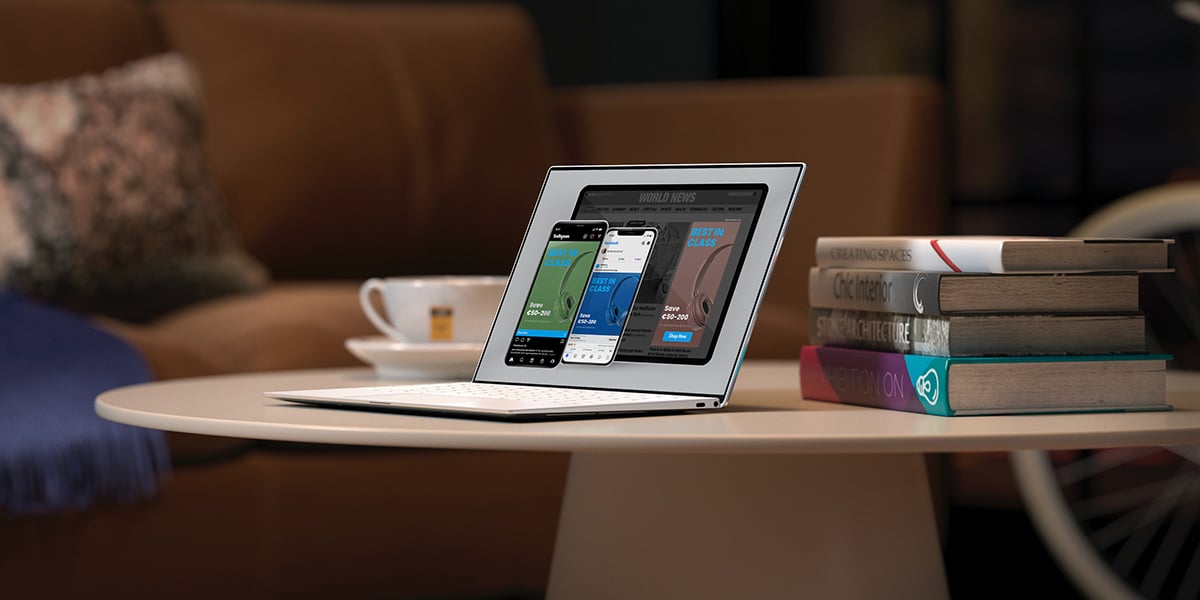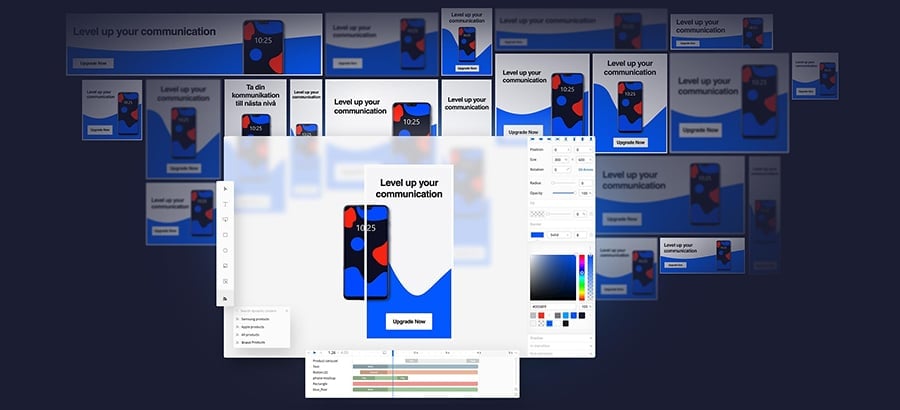Feeds help to make display advertising dynamic. If you’re not using them then you should be. Campaigns that use data offer marketers the prospect of more informative, more useful, more clickable banners. Great for consumers, even better for the brands advertising. With eMarketer research predicting display ads will account for 52% of all digital spend in the US alone – data offers a way to beat the competition. The message: the sooner you get on the data feed bus, the better!
Banners that apply data feeds are a somewhat recent development. With early adopters applying the tech since around 2010. From the beginning the iGaming industry embraced feeds, with the extensive use of up-to-date betting odds. Since then most sectors have joined the bandwagon. While, early users, like betting companies, have produced ever more dynamic advertising.
What are feed banners?
A feed banner refers to a banner ad which displays live data, supplied from a data source. This feed enables live updates to an already published ad. The same ad, in the same place, can run with differing ad creative from copy, to images. This ensures that an ad can remain personal, relevant and fresh. They are a brilliant way to control and display relevant ad content.
Feeds enable a whole new level of personalisation and context. They allow brands to showcase products, engage with consumers, and drive sales online through banners. Publishers, for example, can integrate the advertiser’s product data into banners. When a consumer clicks on a displayed item they go to the product page of the relevant online shop, driving conversions.
Feeds use automated application programming interfaces (APIs). APIs bring scalability and speed to managing dynamic changes. APIs are used to specify the frequency with which a feed is collected and updated. You can choose between uploading JSON or XML file formats, making it an extremely flexible and convenient way of working. According to Google, use of data feeds allows the presentation of different variables, “for example live pricing or stock information. Or even to take account of other factors such as the current weather.”
Feeds help to reduce the pain of production
Using feeds can do more than improve conversion rates. It also reduces the pain of ad production. According to Bannerflow Product Specialist, Travis Isaacson, “feeds can help to improve agility and decrease the time it takes to produce campaigns. You don’t have to produce hundreds of standard banners, each a slightly different variant”. By streamlining the process, copy and creative can be served via a data feed without the need to create multiple banners.
Another plus point for data feeds – other than cost – is human error. Producing hundreds of similar banners, manually, leads to errors. Industries like banking and finance can’t afford to have human errors. They need a secure feed, without contamination. Yes, you can constantly check each banner individually when producing a campaign with hundreds of variations. But honestly, it can take forever – and errors can still creep through. With feeds, you create a spreadsheet once, check it, connect it to your banners, and you’re done.
Minimising the creative resources needed to maintain a display campaign is not just a benefit to marketers, it benefits your design team too. Design teams freed from repetitive production tasks, can instead focus on creative optimisation. Or even design more advanced interactive banners, driving greater engagement.
What’s the difference between dynamic ads and feed ads?
Not a lot. Feeds are all about grabbing external data – the products or offers advertised. Dynamic ads are pretty much the same. But as well as providing a product feed, different copy and creative is supplied. Dynamic ads that use feeds allow you to supply many messages, as well as A/B test. Potentially, you can use an expansive list of messages for a variety of different audiences. With content constantly changed and altered.
Use feeds to make your banners dynamic
Using feeds to make your banner dynamic is a no brainer. By producing online creative that offers viewers more personalised and relevant content, you are able to engage with a more specific target audience and increase sales conversions. Take the bwin banner below, it’s able to display the latest odds, new copy, CTA, and other items depending on the data it receives. It’s a great example of copy and creative that’s dynamically served.
Bannerflow and feeds
Bannerflow has promoted the use of feeds in display ads from the very beginning. It’s because of its founders first hand experience of using data feeds that Bannerflow makes the easy integration of feeds a priority. According to Bannerflow co-founder Daniel Jacobsson, “creating a data feed requires a lot of work per banner. If a company’s not using a platform like Bannerflow, it’s complex process extracting data from a protected API”. Bannerflow acts as a facilitator of the data feed, making it a hell of a lot easier for brands using feeds.
Bannerflow acting as a facilitator is a bigger deal than you probably realise too. Daniel Jacobsson points out that “the reason why a lot non-Bannerflow users aren’t using feeds is because it can put a lot of pressure on the feed source. Bandwidth is maxed, as multiple banners request input, every second”. Bannerflow instead grabs data once then distributes it across the banners it serves. This removes the stress from the client’s feed source. According to Daniel, “it’s a question we often get – bandwidth and traffic. And Bannerflow’s solution is always appreciated by our clients!”
Bannerflow clients also have unique feed “widgets” made for them, for example a product grid. Pre-packaged widgets are easily customised through a style guide, and can range from galleries of products, to the presentation of live odds. Bannerflow is the ideal platform for those marketers wanting to experiment and use feeds.
Conclusion
Fundamentally, feeds have provide advertisers with new creative possibilities, unimaginable before the technology was available. From simple applications, such as supplying the latest betting odds, to more sophisticated interactive banners, marketers should exploit the benefits of data feeds. If you would like to find out more about feeds, dynamic banners, or how Bannerflow can help you achieve greater conversions feel free to contact us.







